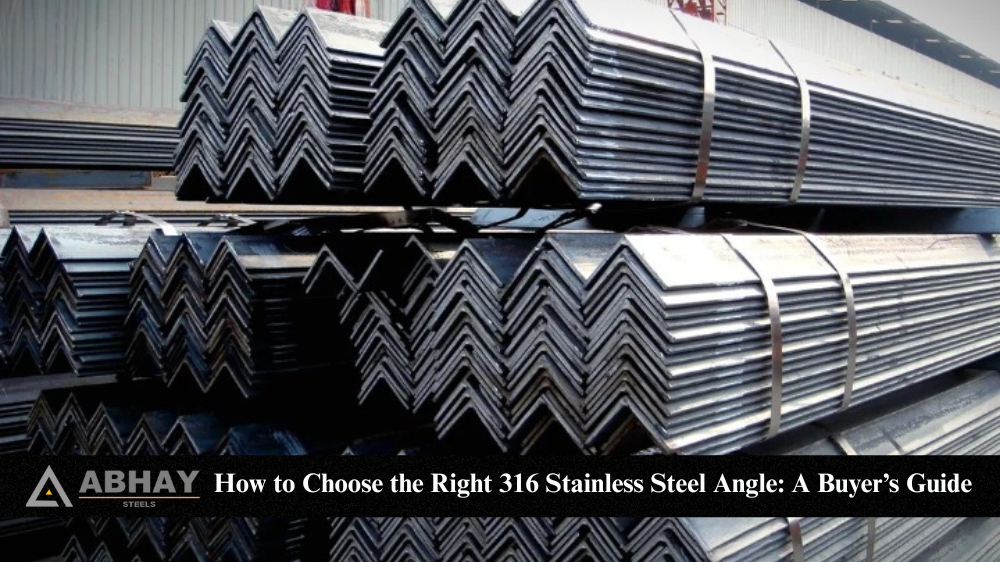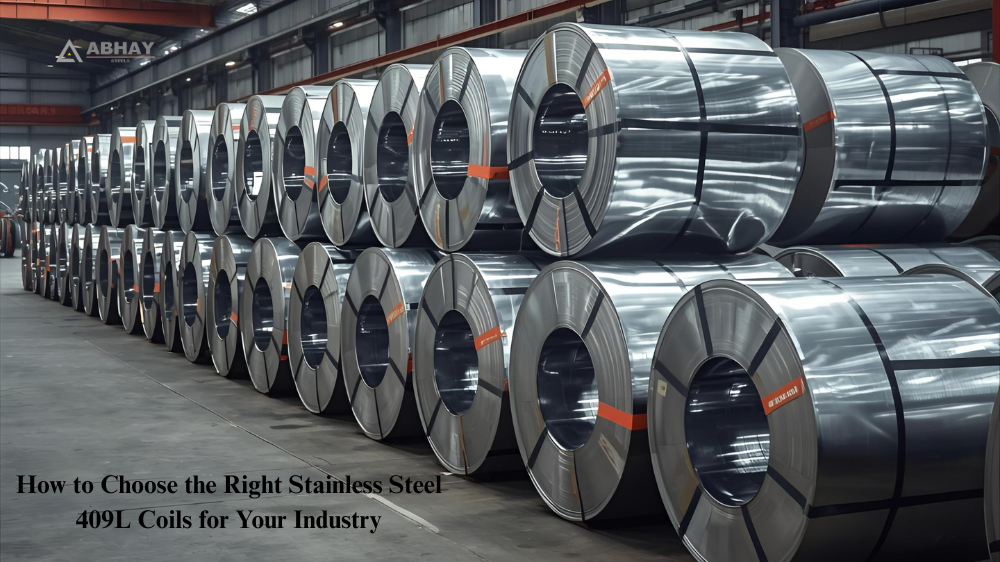Stainless steel angles are widely used in construction, fabrication, and industrial projects. They provide strength, stability, and corrosion resistance where other materials may fail. Among the many grades, 316 stainless steel angle stands out as one of the best choices for demanding environments.
An SS 316 angle is not only strong, but also rust-resistant in salty air, chemicals, and high-moisture environments. Choosing the correct grade is critical as a wrong choice might result in early wear, costly repairs, or even safety concerns. This blog discusses what 316 stainless steel angle is, its properties, types, applications, and how to choose the best one for your needs.
What is 316 Stainless Steel Angle?
A 316 stainless steel angle bar is an L-shaped steel profile made from high-quality stainless steel. It comes in a variety of diameters and thicknesses for structural and manufacturing applications. The important aspect of SS 316 is the addition of molybdenum. This makes it stronger against chloride corrosion compared to 304 stainless steel. While 304 stainless steel angles are appropriate for a variety of applications, they are not recommended for use in areas with high salt content, extreme dampness or chemical exposure. That is why 316 stainless steel angle bars are favored in marine constructions, chemical industries and food-grade situations that require hygiene and durability.
Key Properties of 316 Stainless Steel Angle
A 316 stainless steel angle bar is valued for its combination of strength and resistance to harsh conditions. Below are its main properties explained in detail:
Corrosion Resistance
The biggest advantage of the SS 316 angle is its excellent rust resistance. Due to molybdenum in its composition, it can handle salty seawater, acidic chemicals and industrial fumes.
Strength and Durability
A 316 angle is built for load-bearing applications. It has high tensile and yield strength, meaning it can handle heavy structural loads without bending or breaking.
Heat Resistance
SS 316 angle maintains strength even at elevated temperatures. It can withstand heat up to about 870°C in intermittent use and around 925°C in continuous use.
Ease of Welding and Fabrication
One reason fabricators prefer 316 is its workability. It can be welded using standard techniques without the risk of cracking. It also bends and cuts easily while still retaining its strength, which saves time in custom projects.
Longevity in Harsh Environments
With resistance to pitting, crevice corrosion, and stress corrosion cracking, SS 316 angle lasts for years with minimal maintenance. This long service life reduces replacement costs.
Hygienic Properties
Stainless steel 316 angle has a clean surface that is free of microorganisms, making it ideal for the food and pharmaceutical industries. It meets hygienic requirements in areas where cleanliness is crucial.
These SS 316 angle properties ensure it performs well in industries where both safety and reliability are vital.
Types of 316 Stainless Steel Angles
When buying SS 316 angle bar types, knowing the differences can help you pick the right one for your project. Here are the main options:
Equal Angle vs. Unequal Angle
Equal stainless steel angle: The legs of the “L” are the same length. This provides uniform strength on both sides, making it appropriate for broad structural applications such as frames and supports.
Unequal stainless steel angle: One side is longer than the other. It provides strength in one direction and flexibility in design. These are used where loads are uneven or where space limits one side of the angle.
Hot Rolled vs. Cold Rolled Stainless Steel Angle
Hot rolled angle is formed at high temperatures, resulting in a coarser, scaled surface with substantially less precise dimensions. It is extensively used in large-scale projects, and heavy-duty construction because it is strong, affordable, and durable.
Cold rolled angle: Rolled at room temperature, which produces smoother surfaces, tighter tolerances and a polished look. These are used in projects where appearance and precision matter, such as decorative frameworks or architectural work.
Polished vs. Mill Finish Options
Polished stainless steel angle: Buffed to a reflective, smooth finish. It is used in decorative applications, visible structures, and food-grade facilities where hygiene and appearance are important.
Mill finish stainless steel angle: Comes straight from the rolling process without polishing. It has a dull, matte look and may show surface marks. This option is cost-effective and best for industrial or hidden structural use.
Custom Cut and Fabricated Angles
In addition to regular stock, many sellers provide customized lengths, thicknesses and finishes. These are designed specifically for one-of-a-kind tasks such as specialist machinery, marine hardware, and precision frameworks.
Buyers can match the proper form and finish to the needs of their project by understanding the several sorts of stainless steel 316 angles, whether it’s hidden structural support or visible architectural design.
Applications of 316 Stainless Steel Angle
The versatility of SS 316 angle applications makes it valuable across many industries:
- Construction and infrastructure projects – It is used for frameworks, beams, and supports in bridges, buildings, and towers.
- Marine and offshore industry – Ideal for shipbuilding, docks, and platforms due to resistance to saltwater.
- Chemical and food processing plants – Can withstand corrosive chemicals while maintaining sanitation in food-grade zones.
- Machinery, frames, and supports – Provide strong base structures for equipment and industrial machines.
These 316 stainless steel angle uses show why this material is trusted where strength and rust resistance matter most.
Factors to Consider When Choosing the Right 316 Stainless Steel Angle
When buying, check the SS 316 angle size, including thickness, width, and length, based on load needs. Choose an appropriate finish based on whether the angle will be visible or hidden. Consider the environment, such as marine, industrial, or chemical, and make sure it meets the stainless steel angle safety regulations. Always match the angle’s load-bearing capacity to your project’s specifications. This helps you avoid weak parts and assures long-term success.
Stainless Steel 316 Angle Price Guide
The stainless steel 316 angle price is usually higher than 304 due to added molybdenum. Cost depends on thickness, length, and surface finish. Polished angles are often more expensive than mill finish ones. Global SS 316 angle price trends fluctuate along with raw material and nickel costs. Buyers should compare local and international markets to find the best deal.
Where to Buy Quality 316 Stainless Steel Angle
Always buy from reputable stainless steel 316 angle suppliers that are certified manufacturers. This guarantees that the material meets the specified quality criteria. Many reliable SS 316 angle manufacturers supply both the local and global markets. Ask for mill test certificates to confirm grade, and work only with dealers who provide consistent quality and after-sales support.
Conclusion
A 316 stainless steel angle bar is one of the most durable and dependable solutions for structural and industrial needs. It resists corrosion, handles stress, and lasts longer than many alternatives. Before buying, consider size, type, finish, and supplier quality. Choosing the right SS 316 angle will ensure safety, durability, and value for your investment. Always buy from trusted stainless steel angle suppliers to guarantee performance in the long run.




